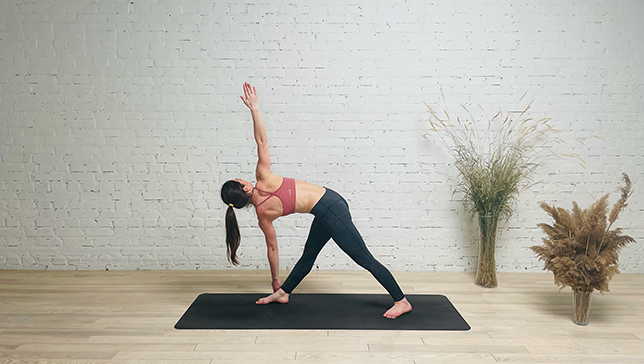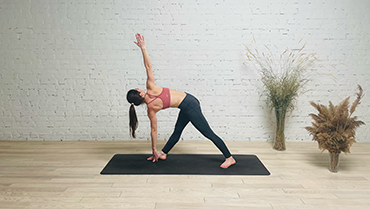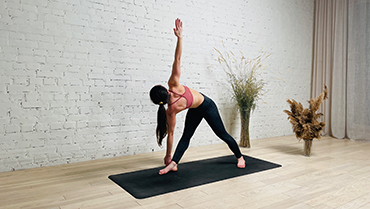Revolved Triangle Pose - Parivrtta Trikonasana

Contents
Revolved Triangle Pose or Parivrtta Trikonasana (par-ee-vrit-tah trik-cone-AHS-anna) provides a powerful opportunity to build concentration and awareness. This twist requires you to stay in the moment, which is a valuable antidote for a wandering mind. And by giving yourself over to the more physically difficult elements of the posture, you can improve your practice of ekagrata, or one-pointed focus.
Revolved triangle is great for either beginner or a more advanced yogis, and can benefit both your physical and mental health.
Pose Detail
- Difficulty: Advanced, Beginners, Intermediate
- Body Position: Arm & Leg Support, Twist Yoga Poses
- By Type: Balancing Yoga Poses, Flexibility Yoga Poses, Hip Opening Yoga Poses, Shoulder Opening Yoga Poses, Strengthening Yoga Poses
- By Benefit: Yoga Poses For Digestion
Step-by-Step Instructions
Benefits and Contraindications
Improves balance
Strengthens the legs, feet, ankles and abdominal muscles
Facilitates movement in the abdominal organs, helping digestion
Increases flexibility in the hamstrings, shoulders and upper back
Neck or spine injuries
Low back/ sacroiliac joint pain
Headache or migraine
Insomnia
Low blood pressure
Pregnancy
Photo poses in different angles


Modifications, Props and Tips
- This pose is slightly easier with a narrower stance. Beginners should also bring their hand to the inner foot, whether on the floor or on a support like a block or folding chair.
- To keep the back of your body even, pretend that you are pressing your head, shoulders, and buttocks against a wall.
- Try to keep your arms in one long line, from the floor to the ceiling.
- If you feel unsteady in the pose, bring your head, neck, and gaze to a neutral position, pointing in the same direction as your hips instead of looking up.
Frequently Asked Questions
Variations
- Revolved Triangle Pose With A Chair
- Revolved Triangle Pose With A Block
- Revolved Triangle Pose With A Wall